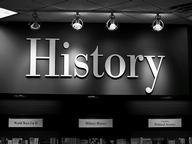Quiz Answer Key and Fun Facts
1. Which of these countries was first to allow women to vote?
2. When the law changed, some women in Britain were allowed to vote, but they had to fulfil certain criteria. Which of these had to be true before a woman could vote?
3. The 20th century was full of female firsts. Who was the first woman to be elected to the U.S. House of Representatives?
4. Sirimavo Bandaranaike was the world's first elected female head of government. Which country did she govern?
5. Some women were allowed to vote in Australian federal elections in 1902, but there were restrictions. When were all Indigenous Australian women allowed to vote at national level?
6. In 1979, the Conservative Party won the General Election and the UK got its first female prime minister. Which Iron Lady was the first woman to be Prime Minister of Britain?
7. Vigdis Finnbogadottir was Europe's first democratically elected female president who served for 16 years. Which country was she president of?
8. In 1986, "Time" magazine's Person of the Year was awarded to the first female president in Asia. Her election brought an end to martial law and authoritarian rule in the Philippines. What was her name?
9. Hilary Clinton played a significant role in American politics at the end of the 20th century and the beginning of the 21st. Which pair of positions did she hold in 2001?
10. Which 21st century world leader is incorrectly matched to her country?
Source: Author
AcrylicInk
This quiz was reviewed by FunTrivia editor
gtho4 before going online.
Any errors found in FunTrivia content are routinely corrected through our feedback system.

